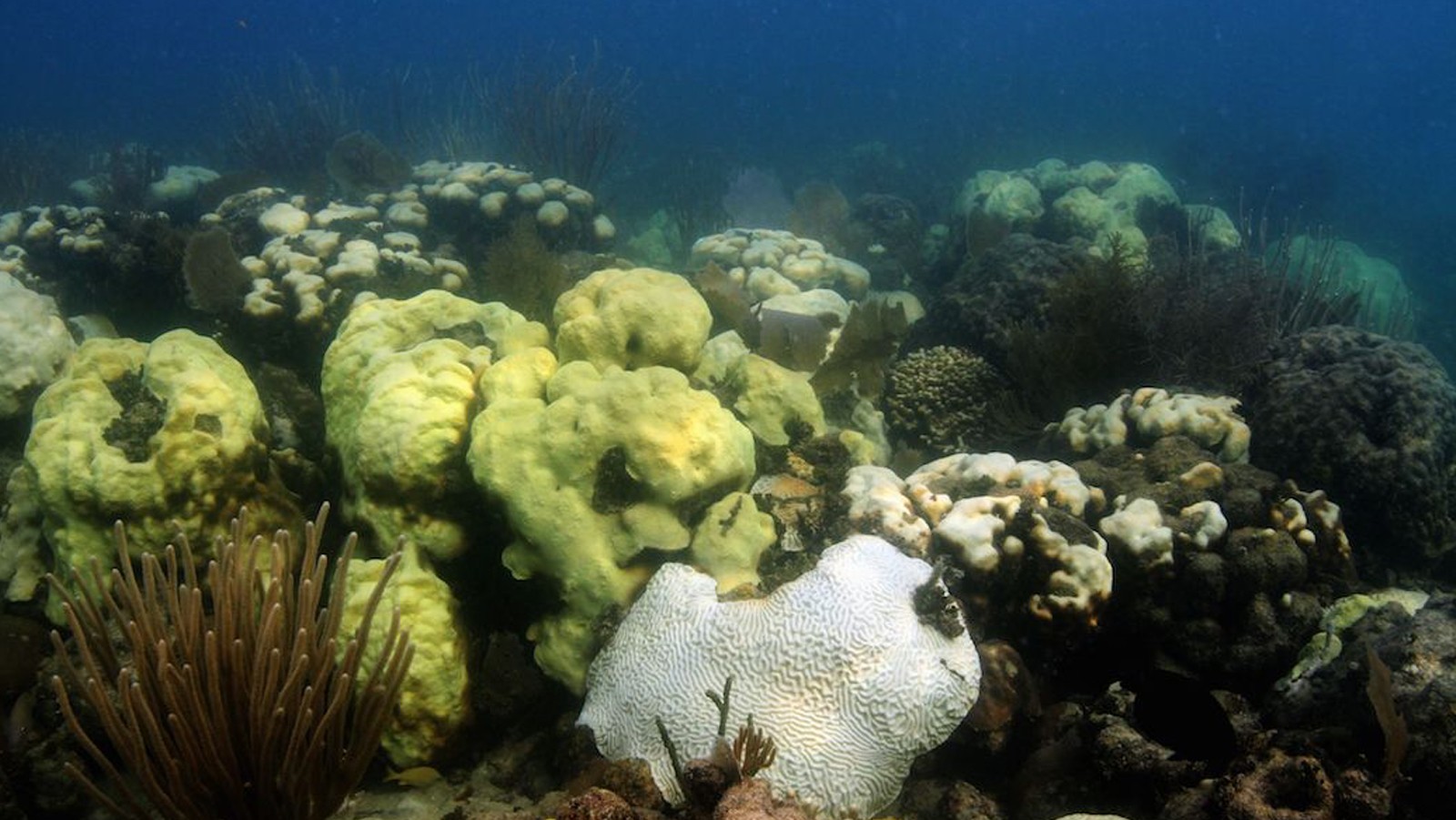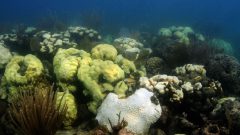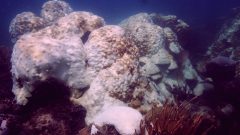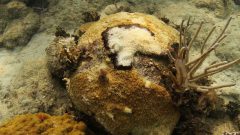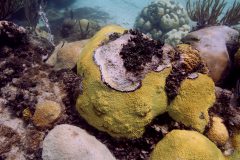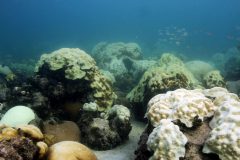Images of corals taken on September 17, 2014, at Cheeca Rocks, which is in the Florida Keys off of Islamorada.
Photo credit: NOAA
Image Captions
From Left:
- Coral bleaching occurring in coral colonies at Cheeca Rocks in the Florida Keys. Image credit: NOAA
- Extensive areas of large colonies of bleached Orbicella faveolata, an threatened species. Image credit: NOAA
- Colony of Dichocoenia stokesii that is infected with Black-Band Disease. Image credit: NOAA
- Photograph showing coral bleaching and disease at NOAA’s National Coral Reef Monitoring Program long-term monitoring site at Cheeca Rocks in September 2014. Coral bleaching and disease have been major drivers of coral reef decline in the tropical western Atlantic.
- Coral bleaching occurring in coral colonies at Cheeca Rocks in the Florida Keys. Image credit: NOAA
- Photograph of mass coral bleaching at NOAA’s National Coral Reef Monitoring Program long-term monitoring site at Cheeca Rocks in September 2014 during the first year of back-to-back bleaching events.
